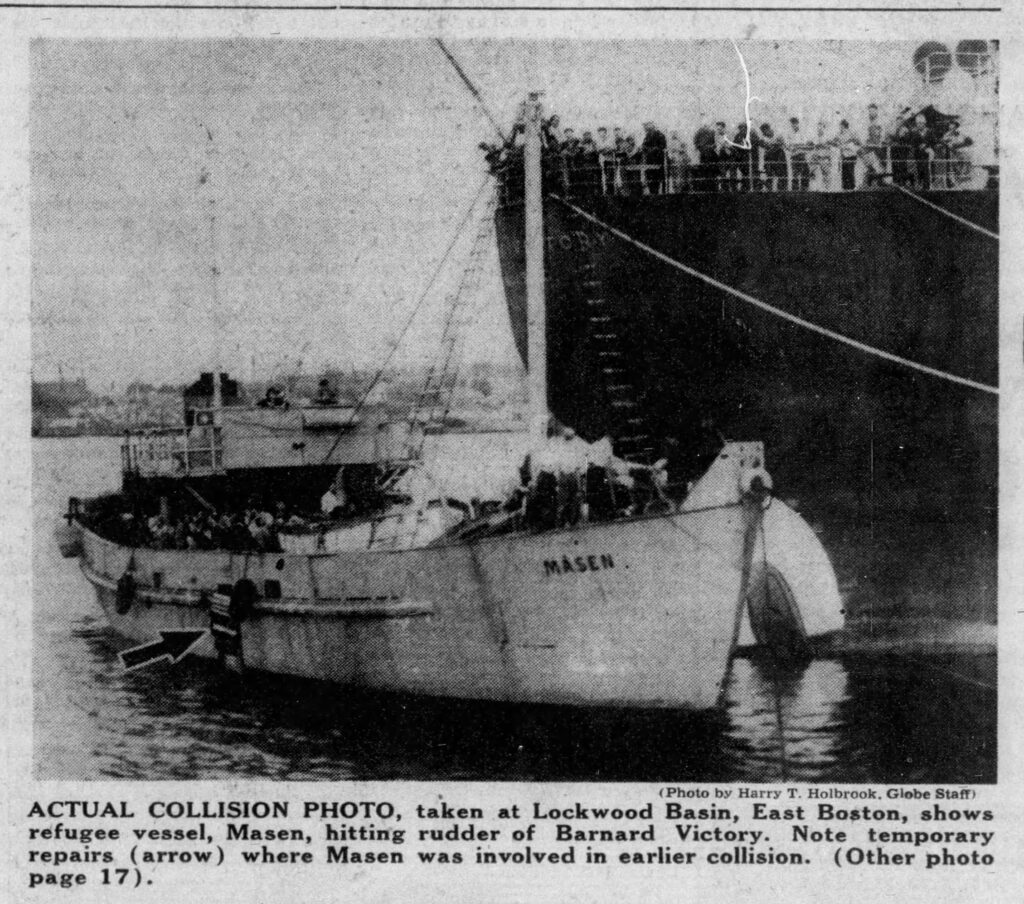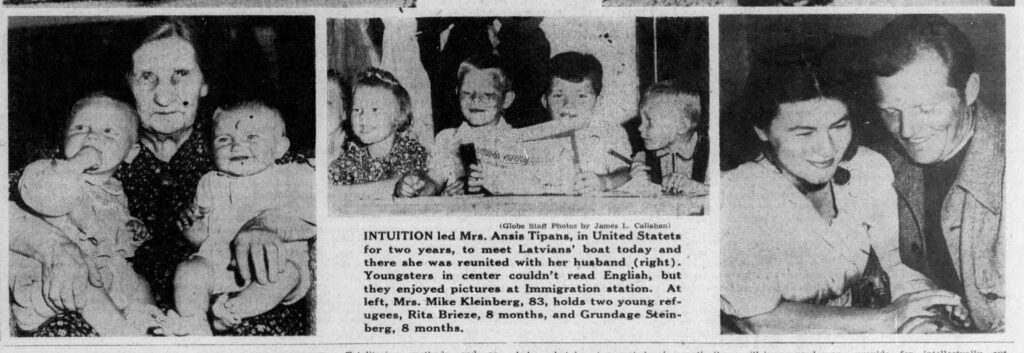Boats

Måsen’s Estonians on Ellis Island, Vaba Eesti Sõna, September 9, 1950
MÅSEN
At 3 a.m. on August 4, 1950, the Måsen, a wooden motor vessel, slipped out of Falkenberg harbor south of Göteborg with over 100 refugees on board. “Another refugee ship left Sweden under the cover of night without a flag, name, or necessary papers,” Vaba Eesti Sõna reported August 19, 1950. “The customs authorities, police, and Coast Guard were alerted, but they were unable to stop the ship in Swedish waters.”
Yngve Johansson, chief constable of Falkenberg, described the boat’s departure as a “semi-escape” in Stockholms-Tidningen Eestlastele on August 6, 1950. That’s because the 105-foot-long (32 meter) Måsen had been banned from sailing until a certificate of seaworthiness was issued, which was impossible due to the high number of passengers on board.
Most of the refugees on the Måsen were Latvians, who were also its main owners. According to various reports, the ship carried 108 passengers, including 27 babies and an 81-year-old woman. There were nine Estonians, four Poles, and two Russians. Valja Tipans, who had arrived on the Gundel two years earlier, had a hunch that her husband, Ansis Tipans, might be a passenger and went to the East Boston Immigration Station where the refugees had been taken. The Boston Globe reported on their happy reunion (see photo below). Also on board was Anastasia Čakste, the daughter-in-law of Jānis Čakste, the first president of Latvia. Her husband, Konstantin Čakste, had been a member of the Latvian resistance and was killed by Germans in 1945.
The boat’s sea route is not known but newspapers reported that its original destination was Puerto Cabello, Venezuela.

The Boston Globe reported on the Måsen’s collision with a ship in Boston harbor. It had already crashed into the Waymouth in heavy fog in the Atlantic Ocean. August 30, 1950
On August 28, 1950, in dense fog, the Måsen collided with the Waymouth, a fishing vessel, 180 miles off the northeastern American coast. No one was injured, but the refugee ship was damaged above the waterline. The boat was towed to Boston, which took two days. As it docked it crashed again. After landing, the refugees, who did not have visas, were sent to Ellis Island, New York, where they were detained for almost five months before being released on bail.
Known crew and passengers:
- H. Evert, wife, and two children
- Eduard Kiss
- Valter Eidok
- Ansis Tipans
- Anastasia Čakste and children, Anna, 14, Katrina, 12
- Rita Brieze, 8 months
- Grundage Steinberg, 8 months

Sweden’s Dagens Nyheter published photos of the Balts on board the Måsen, showing the damaged boat after it had collided with the Waymouth off the U.S. coast.

Valja Tipans, who arrived on the Gundel in 1948, had a hunch that her husband, Ansis, might be on the Måsen. The Boston Globe photographed their happy reunion (far right). August 30, 1950
